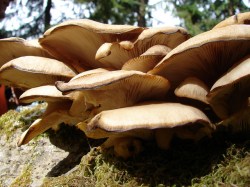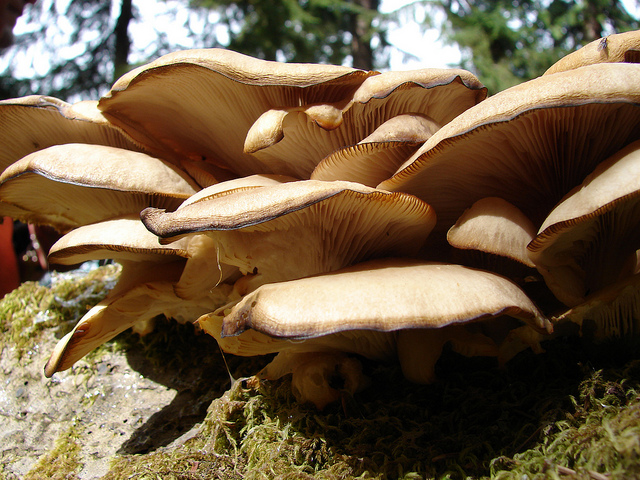A version of this article originally appeared on Clean Technica.

Fungi in the Agaricomycetes class, whose ancestors may have stopped coal deposits. (Photo by Seattle.roamer.)
In an ironic twist, genomics researchers have stumbled upon an incredible discovery — the same ancestral fungus that ended coal formation millennia ago may now be able to boost biofuel and bioenergy production.
The proposal, recently presented by a team of 71 researchers from 12 countries including the U.S. Department of Energy’s Joint Genome Institute (DOE JGI), may have identified what ended the development of coal deposits from fossilized plant remains 360-300 million years ago during the Carboniferous period.
Coal as an energy source is incredibly unique — combining one of the most potent available combinations of stored energy with the largest concentration of harmful emissions. But this uniqueness was entirely due to the absence of fungi capable of breaking down the lignin polymer that kept plant cell walls rigid enough to prevent decay.
Over millions of years, this “unbreakable” plant material converted into peat and then coal, and eventually launched both the Industrial Revolution and modern global warming. But, suddenly (geologically speaking), the development of new coal deposits came to a hard stop around 290 million years ago.
The DOE JGI researchers theorize this change was likely the result of the development and spread of an ancestor of Agaricomycetes, or white rot fungus, which could break down the great bulk of plant biomass into basic chemical components and release the stored carbon into the atmosphere as carbon dioxide.
So, basically, we have white rot fungus to thank for limiting the Earth’s coal deposits and limiting the amount of carbon dioxide, mercury, and other greenhouse gases that can be emitted into the atmosphere. Good job, Agaricomycetes!
While the discovery is meaningful for people concerned about climate change, it may hold the key to increasing biofuel production from feedstocks that are currently infeasible for conversion via fermentation. “The 12 new genome sequences could serve as potential resources for industrial microbiologists aiming to develop new tools for producing biofuels,” said project leader David Hibbett of Clark University.
But increasing biofuel production isn’t the limit for this discovery. Because enzymes from white rot fungi can break down complex organic molecules, researchers think they could ultimately be used in bioremediation operations to remove hazardous contaminants from the environment.
If this theory holds true, it could mean an exponential increase in the ability to reduce emissions from transportation fuels and clean hazardous waste. But white rot could be the tip of the iceberg.
“There’s an estimated 1.5 million species of fungi, we have names for about 100,000 species, and we’re looking at 1,000 fungi in this project,” said researcher Joseph Spatafora. “We’re trying to learn even more to gain a better idea of fungal metabolism and the potential to harness fungi for a number of applications, including bioenergy.”




